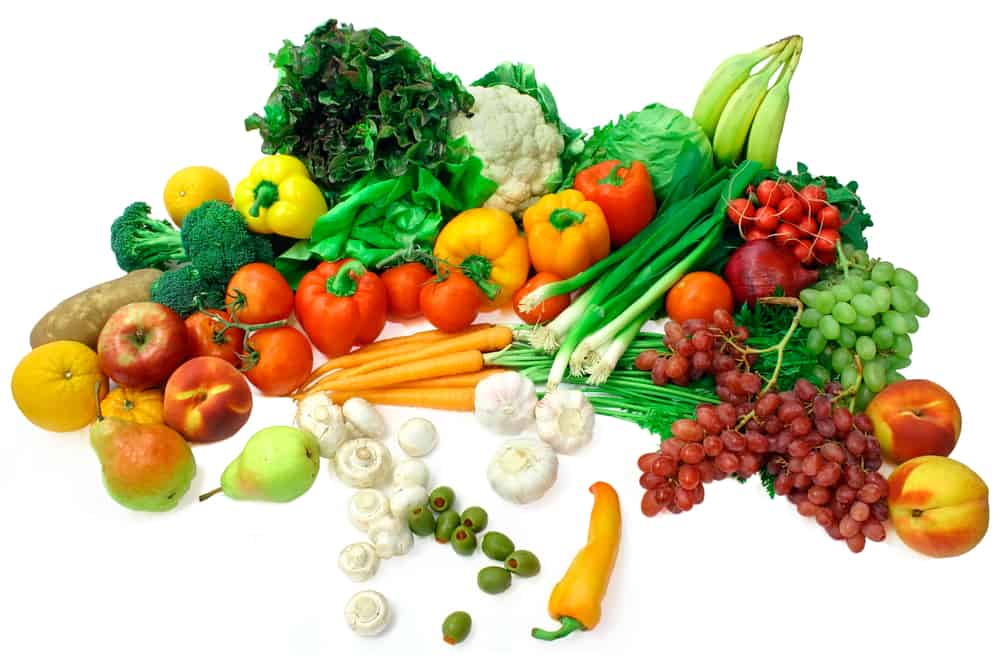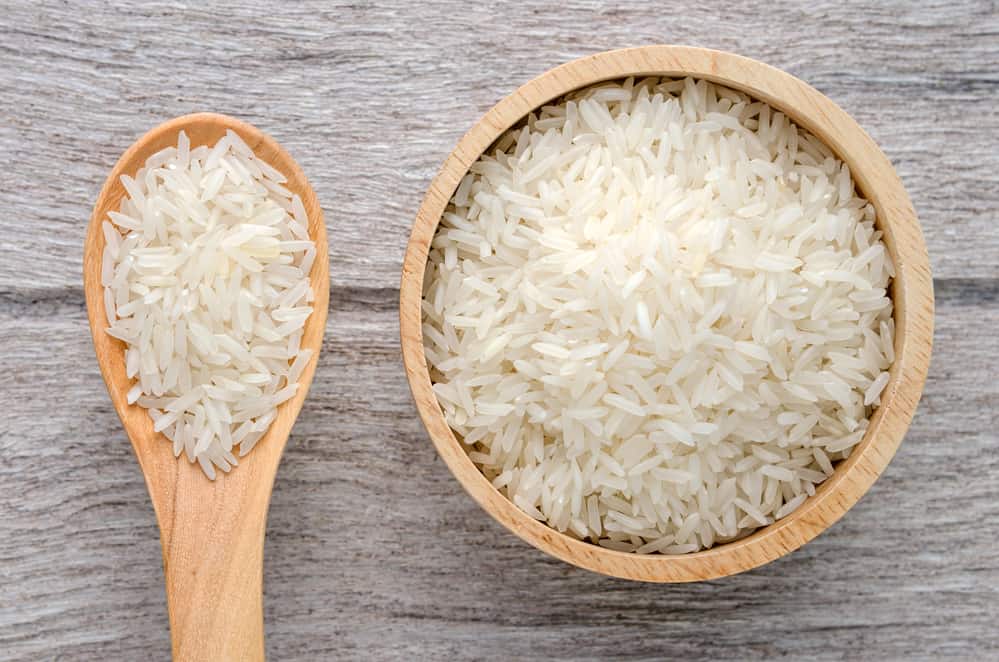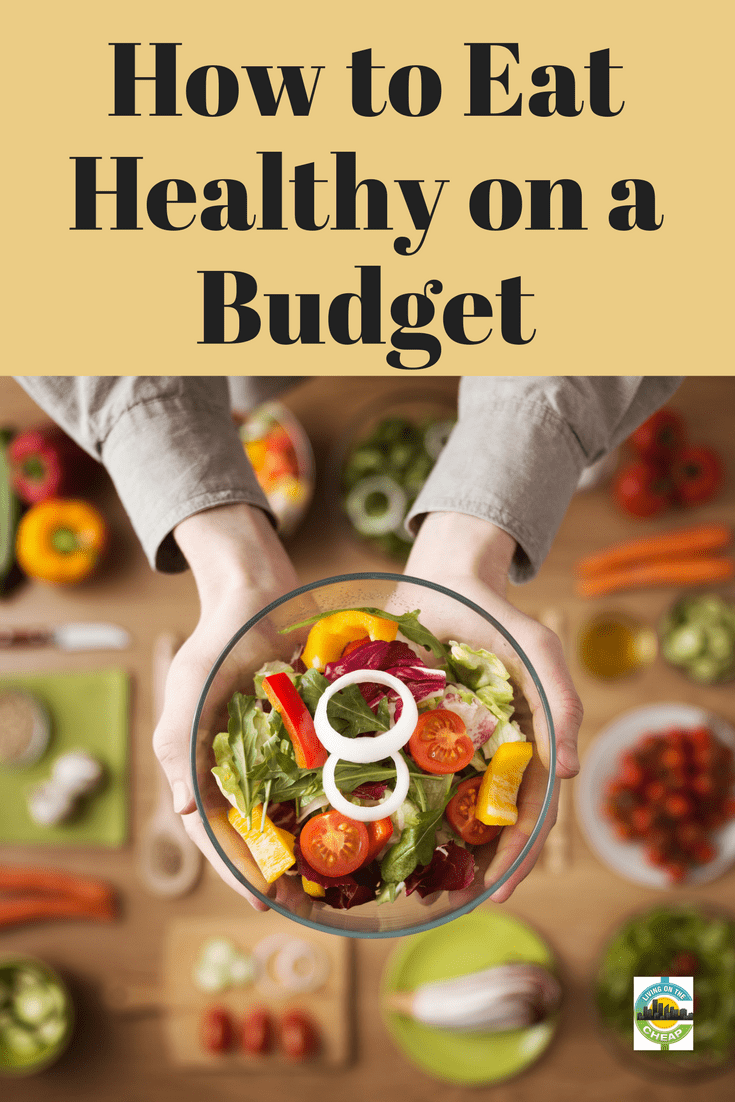It’s a common misconception that eating healthy is expensive. That’s not true. Sure, you can spend a lot on fancy health foods, but it’s not necessary. Many low-cost foods are also good for you.
A healthy diet is made up of a variety of fruits, veggies, whole grains, lean proteins and healthy fats. Fortunately, you can find all of them at an affordable price. There’s no need to spend a fortune to eat healthy.

Photo: Deposit Photos
When I joined thousands of registered dietitians at the annual meeting of the Academy of Nutrition and Dietetics, my favorite part was the exhibit hall full of food companies anxious to hawk their wares. My mission: Seek out foods that could be part of a delicious, nutritious and affordable eating plan.
What I found were tons of cheap, healthy food that will give you varied menus and not cost a fortune. You road to a well-balanced diet starts with these 12 ingredients that are among the best foods to eat on a budget. It is possible to learn how to eat cheap and healthy!
Want more healthy eating tips? Learn more ways to eat healthy on a budget.
Cheap healthy meals and foods
Don’t miss this list of cheap healthy foods that prove healthy eating on a budget is possible. You can eat cheap and healthy with these simple tips!
1. Canned peaches
Almost any canned fruits and veggies are cheap and healthy. Canned produce is often looked down upon as not as good as fresh. But, typically these foods are canned immediately after picking and therefore are preserved at their peak of both freshness and nutrition.
Compare that to a fresh peach picked in Georgia, stored for a day, loaded into a refrigerated truck, driven across the country for three days and displayed at your grocery store for a day before making its way into your house — where it still may wait a day or two before being eaten. There’s nothing wrong with fresh produce. It’s fantastic. But, it can be expensive, especially out of season.
To avoid excess added sugar, choose fruit canned in water or juice vs. syrup.
2. Applesauce
Applesauce is so versatile, and it’s good for you. Phytonutrients in apples support heart health, and applesauce is a source of Vitamin C and fiber. Eat as is or create yummy recipes using applesauce in place of oils or other ingredients. Look for jars with no added sugar.
3. Corn oil
For years, we’ve heard about the benefits of olive oil. Its type of fat is actually good for our hearts. The more affordable canola oil has always been a close second. So I have to admit that I was surprised to learn that new research showed using corn oil vs. olive oil resulted in a 7% greater reduction in LDL (or bad) cholesterol and about a 6% greater reduction in total cholesterol.
This is not only exciting information for health-conscious consumers, but for budget-conscious ones, too. Corn oil usually costs about 13 or 14 cents per ounce, compared to 31 cents to 59 cents per ounce for olive oil. You can use corn oil in any recipe calling for canola, vegetable or olive oil.
4. Pasta
When it comes to meal-building, one of the cheapest foods to buy is pasta. When it’s on sale for $1 or less per box, I stock up. Not only do I score a good deal, but I’m filling my pantry with quick, easy and healthy meal staples.
A one-pound box of pasta can feed four to eight people. Pasta is a great source of healthy carbohydrates that can provide essential nutrients and energy. To boost the health quotient even more, choose whole grain pasta. It’s not quite as cheap as regular, but still a great deal. If your family isn’t too keen on the difference in texture, try cooking it a little longer or mixing half and half with regular pasta.
The Wheat Foods Council has delicious recipes for pasta and a variety of other wheat-based foods. Or get a pasta machine and make your own pasta to save even more money.
5. Peanuts
Nuts are a fantastic source of protein, healthy fats, vitamins and minerals, and peanuts are the cheapest of all the nuts. (Even if, technically, they’re legumes, not nuts.) Peanuts can be mixed into oatmeal for breakfast, snacked on during the day, sprinkled on a salad, ground into a nut butter or made into a flavorful Thai peanut sauce for a yummy dinner.
Because they contain fat, peanuts can turn rancid over time. If you like to stock up on this low-cost food, consider storing some in the freezer. If you need help thinking beyond peanut butter and jelly, you can find recipes on the Peanut Institute’s website.
6. Beans
Dry or canned, beans are among the cheapest healthy foods you can buy. They are loaded with potassium, iron and zinc and are an easy source of protein if you are weaning yourself away from meat.
A can of chickpeas can be added to a vegetarian pasta meal, or spun into delicious hummus and served with vegetable sticks. Lentils just might help your heart by lowering LDL cholesterol and increasing the good HDL cholesterol. Kidney or navy beans are a great addition to chili. Stock your pantry so you’re always ready to whip up a quick healthy meal on a budget.
7. Bananas
Bananas are inexpensive and come in their own package. They have potassium, manganese, Vitamin C and other minerals to help your overall health. Bananas can be used in baking, as a fresh snack, frozen or used to thicken smoothies.
Have they turned brown? Don’t throw them out! Brown, mushy bananas are the sweetest and best to use in baked goods. Try some of these recipes to avoid waste.

Photo: Deposit Photos
8. Eggs
Right up there with pasta in affordability, eggs are yet another versatile, cheap and healthy food that gets protein into your meals. If you allow for two eggs per person, that’s about six meals per dozen.
The American Egg Board is a fantastic resource for all kinds of delicious recipes for breakfasts, lunches, dinners, desserts and snacks featuring eggs.
9. Canned tomatoes
Much like other canned fruits and veggies, canned tomatoes are wonderfully affordable. I can often find a big 28-ounce can of crushed tomatoes for less than $2, using it for two batches of pizza sauce.
Canned tomatoes, whether crushed, diced, pureed, stewed or sauced, make a great base for countless meals. Plus, certain nutrients found in tomatoes are much more available to your body from canned than fresh tomatoes. The Tomato Wellness Council has tons of ideas for what you can do with the various kinds of canned tomatoes.
10. Rice
One of the best foods to eat on a budget is rice. It goes with nearly everything and can stretch a budget to the moon. Just one cup of dry rice can feed a hungry family when it is stir-fried with a variety of vegetables, a handful of leftover chicken, some broth and an egg or two. Use leftover rice to make pudding, or try it for breakfast instead of cereal (add milk and sugar).

Photo: Deposit Photos
Bon Appetit gives you a head start on recipes. Buy rice in bulk and store in a lock-tight container.
11. Winter squash
Buy when squash in the fall and winter when it’s cheap, and it will keep for several months. The taste sweetens with age after harvest, and it still packs a tremendous punch with lots of vitamins and minerals. The different types of winter squash — such as butternut, acorn, spaghetti and pumpkin — are filling and diverse in their uses. Better yet, they’re cheap and healthy.
Cut for fries, slice in half and roast, fill with nuts or stuffing, puree for a mash or soup or make a sweet pie.
12. Frozen veggies
Looking for foods that cost less than $1? You can typically find a pound of frozen veggies for a dollar or less.
Not only are they cheap, but they’re good for you, too. Frozen vegetables are sent into the deep freeze as soon as possible after harvest. That means they maintain their nutrient content and freshness. That’s especially beneficial when certain vegetables are out of season.
Frozen vegetables are nice to have around, so you can throw together a healthy, balanced and quick meal. Choose those that are frozen without sauces to avoid extra calories, salt and fat. Frozen vegetables can simply be heated up and served as a side dish, but they can also be stirred into casseroles, soups, stews and more.
If you liked this article about affordable healthy food, you might also like:
- How to save money on food without using coupons
- Want to save and be healthy? Fruit is cheaper than twinkies
- Freezer cooking 101: Healthy family dinners without the hassle
- Best diet books for eating healthy while saving money
- Hacks to cut your grocery bill in half
- How to eat healthy on a budget


hi..enjoy your articles ..keep it up!
thanks
I especially agree with you about Aldi’s. I am shopping for more and more there. My doctor wants me to eat as gluten free as possible and they have a “G-Free” selection that is less costly than other stores. Gluten free products are not always as tasty as non-Gluten free, but my stomach is a whole lot happier. Aldi’s does not carry as much as larger grocery stores, but I go there first and what I cannot find there, I find elsewhere. I found that it’s good stock up on their “special buys” as they are not necessarily there again after the first week or two. (They may testing the response because some things that started out as special buys are now standard. You also have to pay for bags for the groceries and pack it yourself, but I prefer reusable cloth bags anyway and I like to pack my own groceries. I believe that they are only located in states east of the Mississippi (so far), but that may change as time goes on. I hope they expand their choices, but you can get most of the basics at a good price and of good quality. I’m moving to another state in a few months and when I checked out local shops, I found two Aldi’s locations that are very convenient. YAY!
You’re leaving out the most important information about your list.
1. Canned food if it’s not organic use BPA to seal their cans.
2. Corn Oil is probably GMO and highly processed. The majority of corn in this country is GMO. If it’s not organic it probably won’t be good for you.
3. Even though peanuts are nutritious, they are the least nutritious of all nuts, considering the fat, it’s better to do other nuts.
4. Canned fruits and veggies, look at the BPA and look at the sodium. Most canned tomatoes will have a high sodium content.
Heidi,
My gastroenterologist gave me a list of foods I need to eat to prevent my diverticulosis from becoming diverticulitis. What you just wrote is 99% forbidden by my gastroenterologist. He said…NO oil except olive. He said NO food item which contains fructose. He said NO grains from any source. No tomoto’s. No gas producing food item…so Heidi, be so kind and get back to me and spell out just zakly what I can have and still not spend more that 2 bux a day, which is what I get by on.
Hello, Thank you for responding. The above article is meant for the general, healthy population. For specific medical conditions your best bet would be to contact a registered dietitian. You can find one near you at Eatright.org. Good luck
“Greek yogurt for 75 cents.” I’m pretty sure you are meaning the single serving size here. If you really want to see savings on yogurt buy the larger and mix in whatever berry is on sale. The fruit in single serving yogurt isn’t enough to count as a fruit serving anyway, so this gives you more nutrition for less.
Not sure how you add canned ANYTHING to your list – Most canned fruits veggies etc contain wayyyyy more sugar – sodium or BOTH than the natural or frozen counterparts – And even wheat pasta is not that great – If someone where to take the above mentioned list it would not provide very many healthy meals. Aldi though I agree on. I try to buy in season and fresh as possible. But even w stores like Aldi – eating healthy is just not ever going to be a cheap option – cheaper than heart surgery – but most people who truly can not afford healthy and fresh dont have the option or luxury of thinking that far ahead.
Thank you for commenting. Yes, some canned fruits and vegetables have added sugar and/or salt, however, most stores sell fruit canned in juice and no-salt-added vegetables. Both of those are terrific, affordable options, especially if the alternative is not being able to buy fruits or vegetables at all. Next time you head to the store, check out those items, I’m sure you’ll be able to find the healthier versions.